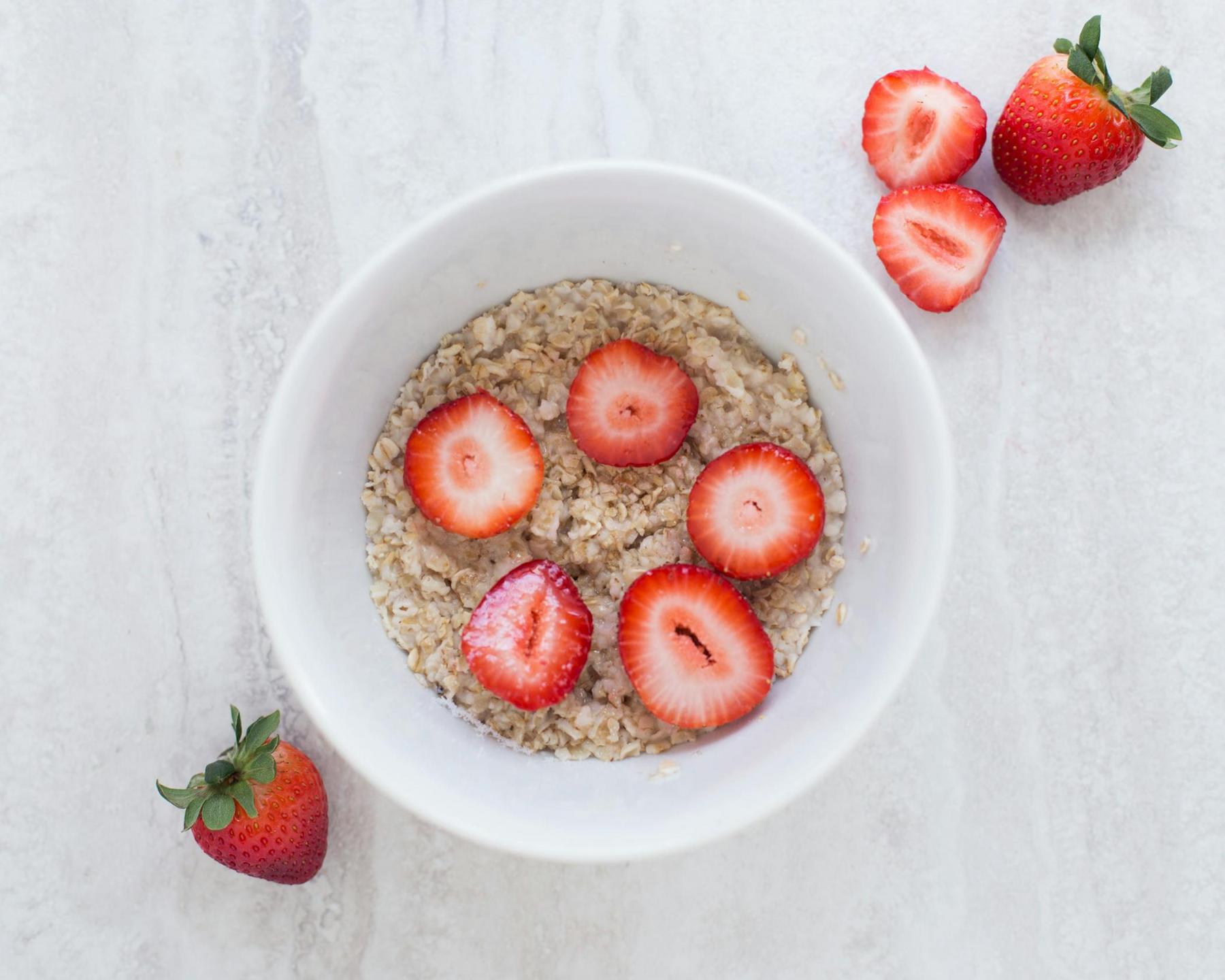The morning meal dilemma confronts countless Australians each day: reach for convenience or invest time in nutrition? This daily negotiation often results in skipped breakfasts, hurried choices, or meals that leave you hungry within hours. Yet research demonstrates that breakfast composition—particularly protein content—significantly influences appetite control, metabolic function, and weight management outcomes. The solution exists in protein pancake recipes that combine nutritional density with practical preparation, transforming breakfast from a problematic obligation into a strategic advantage for your day.
What Makes Protein Pancakes Different From Traditional Pancakes?
Protein pancakes fundamentally differ from conventional pancakes through their macronutrient composition and ingredient selection. Traditional pancakes consist primarily of refined flour, sugar, and minimal protein—typically providing 3-5 grams of protein per serving. This composition triggers rapid blood glucose elevation followed by swift decline, creating the familiar mid-morning energy crash and renewed hunger.
Protein pancakes incorporate multiple protein-dense ingredients: eggs providing complete amino acid profiles, Greek yogurt contributing both protein and probiotics, oat flour supplying complex carbohydrates, and protein powder enhancing overall protein content. This combination delivers 15-46 grams of protein per serving, depending on recipe formulation.
The scientific rationale for elevated breakfast protein centres on appetite regulation. Research published in Advances in Nutrition demonstrates that breakfast meals containing ≥30 grams of protein and ≥350 kilocalories provided as solid foods significantly increase satiety responses compared to breakfast skipping or lower-protein alternatives. Higher-protein breakfasts (35-49 grams) elicit greater increases in fullness sensations than normal-protein versions.
These pancakes achieve nutritional density through strategic ingredient pairing. Oats combined with Greek yogurt and milk create complete protein with all nine essential amino acids. Eggs provide perfect protein digestibility scores whilst contributing structure. Greek yogurt adds 15-20 grams of protein per cup alongside beneficial bacteria supporting digestive health. This synergistic approach transforms pancakes from simple carbohydrate vehicles into comprehensive nutritional platforms.
How Do Protein Pancakes Support Appetite Control Throughout the Day?
The appetite-regulating capacity of protein pancakes operates through multiple physiological mechanisms involving gut hormones, neurological signalling, and mechanical digestive processes. Understanding these mechanisms clarifies why protein-rich breakfasts consistently demonstrate superior satiety outcomes in clinical research.
Protein intake triggers release of several key satiety hormones. Peptide YY (PYY), released by L-cells in the distal gut, increases significantly following high-protein meals. PYY acts as an “ileal brake,” slowing gastric motility and promoting fullness sensations. Research indicates that breakfast containing ≥30 grams of protein leads to substantially elevated PYY levels, corresponding with reduced subsequent food intake.
Glucagon-like peptide-1 (GLP-1) represents another critical satiety mediator. High-protein meals stimulate greater GLP-1 secretion than carbohydrate or fat-predominant meals, with whey protein proving particularly effective. GLP-1 slows gastric emptying, prolongs nutrient absorption, and negatively correlates with hunger during late satiety phases. Greater GLP-1 increases associate with smaller subsequent meal sizes.
Ghrelin, often termed the “hunger hormone,” increases during fasting and decreases following protein consumption. Protein intake suppresses ghrelin more effectively than carbohydrates or fats, with whey and milk proteins demonstrating notable ghrelin-reducing capabilities. This hormonal cascade—elevated satiety hormones combined with suppressed hunger hormones—creates the physiological foundation for sustained appetite control.
Cholecystokinin (CCK), secreted by intestinal I cells in response to protein and fat, stimulates gallbladder contraction, pancreatic enzyme secretion, and slows gastric emptying. Whey protein produces notable CCK responses, contributing to the cumulative satiety effect of protein-rich breakfasts.
Research examining breakfast consumption patterns reveals that 67% of breakfast studies demonstrated improvements in appetite control and satiety compared to breakfast skipping. Notably, these benefits extend beyond immediate post-breakfast hours, with higher-protein breakfasts producing satiety effects lasting 3-4+ hours. This extended appetite suppression reduces mid-morning snacking impulses and moderates lunch portion sizes.
Which Protein Pancake Recipe Formulations Provide Optimal Nutrition?
Different protein pancake formulations offer varying nutritional profiles suited to individual requirements and preferences. The following table compares four evidence-based recipe frameworks:
| Recipe Type | Protein Content | Key Ingredients | Primary Benefits | Preparation Complexity |
|---|---|---|---|---|
| Greek Yogurt & Oat Base | 31-37g per serving | Greek yogurt, rolled oats, eggs, protein powder | Complete amino acid profile, probiotics, sustained energy | Low |
| Banana-Egg Foundation | 15g per pancake | Bananas, eggs, protein powder, oats | Natural sweetness, potassium, no added sugar required | Very Low |
| Cottage Cheese Blend | 20-25g per serving | Cottage cheese, oats, eggs, milk | High leucine content, calcium-rich, creamy texture | Low |
| High-Protein Enhanced | 40-46g per serving | Protein powder, Greek yogurt, egg whites, oat flour | Maximum protein density, muscle preservation support | Moderate |
Greek yogurt and oat-based recipes provide balanced nutrition with complete protein profiles. One cup of Greek yogurt delivers 15-20 grams of protein whilst contributing probiotics supporting digestive health. Rolled oats supply 5-10 grams of protein per cup alongside complex carbohydrates and dietary fibre. When combined with eggs and protein powder, this formulation achieves 31-37 grams of protein per serving.
Banana-egg foundation recipes offer simplicity and natural sweetness without added sugars. Bananas provide moisture, potassium (approximately 422 milligrams per medium banana), and prebiotic fibres. Combined with eggs and protein powder, these pancakes deliver approximately 15 grams of protein per pancake whilst requiring minimal ingredients and preparation time.
Cottage cheese-based pancakes excel in leucine content—the branched-chain amino acid most strongly associated with muscle protein synthesis. Cottage cheese provides 12 grams of protein per half-cup serving with particularly high leucine concentrations. This formulation proves valuable for individuals prioritising muscle preservation during weight management.
High-protein enhanced recipes maximise protein density for individuals requiring elevated protein intake. Utilising protein powder, Greek yogurt, egg whites, and oat flour, these pancakes deliver 40-46 grams of protein per serving. Whilst requiring more careful preparation to prevent dryness, this formulation supports substantial satiety and protein requirements.
Importantly, 99% of Australians meet their protein requirements through food intake without supplementation, according to Dietitians Australia. However, strategic protein distribution across meals—rather than total daily intake—influences satiety outcomes. Nutrition experts recommend 15-25 grams of protein at breakfast, with some suggesting up to 30 grams for optimal appetite control.
What Does Research Reveal About Breakfast Protein and Weight Management?
The relationship between breakfast protein intake and weight management outcomes emerges clearly from multiple research streams. Data from the National Weight Control Registry demonstrates that 78% of individuals who successfully lost and maintained weight loss of 66+ pounds ate breakfast daily. This observational finding aligns with mechanistic research explaining how breakfast protein influences energy balance.
Meta-analyses examining breakfast skipping patterns reveal an 11% increased relative risk for overweight or obesity when breakfast is skipped ≥3 days per week compared to ≤2 days per week. Seven out of nine longitudinal studies reported that breakfast skipping associated with weight gain over time. However, controlled trials show more nuanced results: when total calorie intake remains controlled, breakfast timing itself produces minimal weight difference. This apparent contradiction resolves through understanding that breakfast skipping often correlates with poorer overall dietary patterns and reduced satiety leading to increased subsequent food intake.
Breakfast composition proves more critical than breakfast consumption alone. Research indicates that breakfast meals containing ≥30 grams of protein reduce daily hunger by 67% in study comparisons. This appetite suppression translates to reduced overall calorie intake throughout the day—the mechanism through which breakfast protein supports weight management.
Protein’s thermogenic effect contributes additional metabolic advantage. The thermic effect of food (TEF)—energy required for digestion and absorption—reaches 20-30% of protein calories consumed compared to 5-10% for carbohydrates and 0-3% for fats. This means approximately 20-30 calories from every 100 protein calories are expended during digestion itself.
During caloric restriction for weight loss, adequate protein intake becomes particularly important for preserving lean muscle mass. Protein provides amino acids necessary for muscle protein synthesis, partially offsetting the muscle loss typically occurring during energy restriction. Maintaining muscle mass during weight loss proves critical for sustaining metabolic rate and physical function.
Circadian rhythm research reveals additional complexity in meal timing. Breakfast consumption activates circadian clock genes, synchronising peripheral metabolic systems. Breakfast signals gut and brain circadian systems, optimising metabolic function throughout the day. Conversely, breakfast skipping dysregulates clock genes affecting energy expenditure and metabolic regulation. Regular meal timing, beginning with breakfast, improves metabolic efficiency.
How Should You Prepare and Store Protein Pancakes for Maximum Convenience?
Practical preparation methods determine whether protein pancakes become sustainable breakfast solutions or abandoned experiments. Optimal cooking technique requires medium heat rather than high temperatures. Protein-dense batters burn easily whilst remaining undercooked internally at high heat. Medium heat allows thorough cooking whilst preventing exterior burning.
Cooking time should remain minimal—approximately 1-2 minutes per side—to prevent dryness, a common complaint with protein pancakes. Covering the pan during initial cooking increases fluffiness by trapping steam, partially steaming the top surface before flipping. This technique reduces overall cooking time whilst improving texture.
Batter consistency requires attention. Protein pancake batter typically appears thicker than traditional pancake batter due to oat flour and protein powder absorption. Allowing batter to rest for 5 minutes before cooking permits flour and protein powder to fully hydrate, preventing excessively thick or gummy texture. If batter appears too thick after resting, gradually incorporate small amounts of milk until desired consistency is achieved.
Storage and meal preparation strategies transform protein pancakes from time-intensive breakfast options into convenient ready-to-eat meals. Cooked pancakes remain fresh in airtight containers in the refrigerator for 4-5 days. For extended storage, freeze pancakes individually with parchment paper between layers for up to 2 months. This approach prevents pancakes from freezing together, allowing removal of single servings as needed.
Reheating methods affect texture and palatability. Microwave reheating requires only 10-20 seconds for refrigerated pancakes and 30-45 seconds for frozen pancakes. Toaster oven reheating at 175°C for 3-5 minutes produces superior texture, restoring slight crispness to exterior surfaces. Avoid prolonged reheating, which dries protein pancakes significantly.
Customisation allows adaptation to individual preferences and nutritional requirements. Protein powder selection—whey, plant-based pea protein, hemp protein, or casein—accommodates dietary preferences and tolerances. Milk alternatives (almond, oat, soy) substitute for dairy milk without compromising recipe structure. Mix-ins including berries, chocolate chips, or nuts can be added during cooking for variety. However, toppings require mindful selection; whilst Greek yogurt and nut butters enhance protein content, excessive maple syrup or sweetened toppings undermine nutritional benefits.
Beyond Individual Recipes: Breakfast Protein Within Comprehensive Health Approaches
Protein pancakes represent one component within broader nutritional strategies supporting health and weight management goals. Isolated dietary changes—regardless of nutritional merit—rarely produce substantial, sustained outcomes without accompanying behavioural, lifestyle, and sometimes medical interventions.
Contemporary understanding of weight management emphasises comprehensive approaches addressing multiple physiological and behavioural factors. Adequate protein intake, regular meal timing, appropriate calorie balance, physical activity, quality sleep, stress management, and medical interventions when appropriate all contribute to successful outcomes. Protein pancakes facilitate adherence to nutritional recommendations by providing satisfying, practical breakfast options that support appetite control and protein distribution goals.
For individuals with BMI ≥27 seeking significant weight reduction, evidence-based medical weight management programmes offer structured support combining multiple intervention modalities. These programmes typically integrate nutritional guidance, behavioural coaching, and medical treatments overseen by healthcare professionals. Research demonstrates that comprehensive medical approaches achieve substantially greater weight reduction than dietary changes alone.
The appetite-regulating mechanisms activated by high-protein breakfasts—suppressed ghrelin, elevated PYY and GLP-1, prolonged satiety—align with physiological pathways targeted by medical weight management treatments. This complementary relationship suggests that nutritional strategies including protein-rich breakfasts may enhance outcomes when combined with medical interventions.
Importantly, sustainable weight management requires ongoing support and evidence-based strategies rather than temporary dietary changes. Protein pancakes contribute to long-term sustainability by providing enjoyable, nutritionally dense breakfast options that don’t feel restrictive or sacrificial—critical factors for dietary adherence.
Skip the struggles. Our patients achieve <20.2% weight reduction with medical weight loss treatments delivered straight to their door. No clinics. No waiting. Just results. See if you’re eligible for our medical weight loss treatments – take our quiz.
How much protein should breakfast contain for optimal appetite control?
Research indicates breakfast meals containing ≥30 grams of protein and ≥350 kilocalories provided as solid foods maximise satiety responses. However, most nutrition experts recommend 15-25 grams of protein at breakfast as a practical target. Individual requirements vary based on body weight, activity level, and overall daily protein needs.
Can protein pancakes support weight loss goals?
Protein pancakes can support weight management when incorporated within calorie-controlled eating patterns. The elevated protein content promotes satiety, reduces subsequent hunger, and helps preserve muscle mass during weight reduction. Research demonstrates that 78% of individuals who successfully lost and maintained substantial weight loss ate breakfast daily. However, overall calorie balance is key.
What’s the best protein powder type for pancake recipes?
Whey protein powder is often recommended due to its neutral flavour profile, fine texture, and rapid mixing characteristics, as well as its effective stimulation of satiety hormones like GLP-1 and PYY. Plant-based alternatives such as pea protein, hemp protein, and brown rice protein are also suitable, especially for those with dairy sensitivities.
How do protein pancakes compare to other high-protein breakfast options?
Protein pancakes offer comparable nutritional benefits to other high-protein breakfasts, such as Greek yogurt bowls, egg-based dishes, and protein smoothies. They provide 15-46 grams of protein per serving depending on the recipe, which is competitive with options like 3-egg omelettes or Greek yogurt parfaits. The choice ultimately depends on personal preference and dietary patterns.
Can children and teenagers eat protein pancakes regularly?
Protein pancakes can be an appropriate breakfast option for children and teenagers when made with whole food ingredients and not overly supplemented with protein powder. For younger children, it is advisable to keep protein content moderate (not exceeding 25-30 grams per serving) to ensure a balanced intake of other essential nutrients. Consultation with a healthcare provider or dietitian is recommended for personalized guidance.



